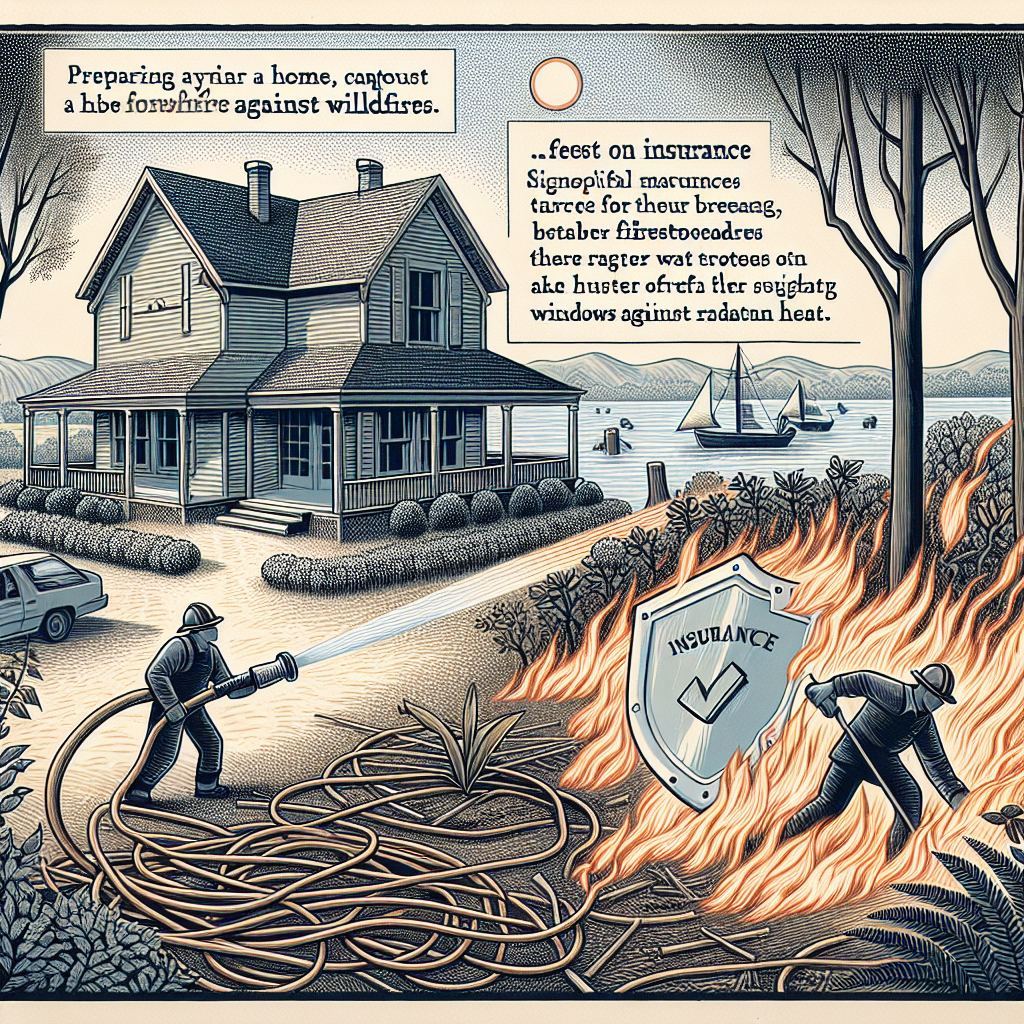Filed under Home Insurance on
Loss of Use Coverage for Home Insurance Explained

When a house becomes unlivable, your first question is simple: where will we sleep tonight, and who pays for it? That is exactly what loss of use coverage—also known as Additional Living Expense (ALE), Coverage D, or Fair Rental Value—is designed to answer. In this guide, you’ll find Loss of Use Coverage for Home Insurance explained in plain language, with real-world examples, cost estimates, timelines, and claims tips you can put to work immediately.
What Is Loss of Use Coverage?
Loss of use coverage pays the extra costs you incur when a covered peril makes your home uninhabitable. Think fire, smoke, burst pipes, windstorm, or a tree crashing through the roof—perils your policy insures against. While your home is being repaired or rebuilt, this coverage helps maintain your normal standard of living in a temporary place.
The coverage generally has three parts:
- Additional Living Expenses (ALE): Reimburses the increased costs to live elsewhere—hotel or rental, meals if you have no kitchen, extra commuting, storage, laundry, even pet boarding in some cases.
- Fair Rental Value: If you rent out part of your property (like a basement apartment) and it’s unusable due to a covered loss, the insurer may pay the lost rent, typically less any expenses you don’t have during the vacancy (such as utilities).
- Civil Authority/Prohibited Use: If a government order prohibits access to your home due to nearby danger (for example, wildfire smoke or a collapsing structure next door), your policy may cover temporary living costs for a short period, even if your home wasn’t directly damaged.
Below, you’ll see Loss of Use Coverage for Home Insurance explained through scenarios that show how the numbers work and how to avoid common pitfalls.
How It Works in Practice
Loss of use kicks in only when a covered peril makes the home unfit to live in, or a civil authority bars access. Insurers will consider safety, sanitation, and essential services like water, power, and heat. If any one of these is compromised, the home may qualify as uninhabitable.
- Report the claim promptly. Ask your insurer whether a field adjuster visit is required to confirm uninhabitable status.
- Request an ALE advance if needed. Many carriers can send an initial payment or provide a prepaid card for immediate expenses.
- Secure temporary housing. Start with hotels, then line up a short-term rental if repairs will take more than a couple of weeks.
- Track all expenses. Keep every receipt, document mileage, and maintain a simple spreadsheet. This is critical.
- Submit itemized requests. Insurers typically reimburse the difference between what you normally spend and what you must spend now to maintain a similar lifestyle.
- Review limits and timeframes. Coverage amounts and maximum months apply; get them in writing from your adjuster.
Consider this your field guide: Loss of Use Coverage for Home Insurance explained with the steps you’ll actually take when you’re displaced.
What’s Covered—and What’s Not
Commonly Covered (policy-dependent)
- Hotel or rental costs comparable to your home and neighborhood
- Meal cost increases when you can’t cook at home
- Extra commuting or transportation (e.g., longer drive from temporary housing)
- Utility deposits or connection fees at a temporary residence
- Storage for belongings
- Laundry services if you can’t access your machines
- Pet boarding when temporary housing won’t accept animals
Commonly Not Covered
- Costs unrelated to the loss (e.g., elective upgrades to your lifestyle)
- Expenses you would have paid anyway (regular mortgage, usual utilities, typical grocery costs)
- Damage from excluded perils (e.g., flood, earthquake) unless you carry dedicated policies that include ALE
- Long-term housing beyond policy time limits
- Business income losses from a home office (that needs separate coverage)
Insurers reimburse the increased costs of living, not every expense you incur. If your mortgage is $1,800 and your temporary rent is $2,500, many carriers pay the $700 difference (plus eligible extras). However, policy language varies, and some insurers handle rent and mortgage differently during displacement. Ask your adjuster to clarify your exact approach—in writing.
Limits, Timeframes, and Deductibles
Homeowners policies often set loss of use coverage as a percentage of your dwelling (Coverage A) limit. A common range is 20 to 30 percent, though some carriers set fixed dollar limits. For renters and condo owners, the amount is usually a percentage of personal property coverage, but check your declarations page—percentages vary by form and insurer.
Time limits apply, usually 12 months, sometimes 24. Civil authority coverage is often shorter—commonly up to two weeks, though some carriers offer longer periods in catastrophes. A deductible generally does not apply to ALE reimbursements, but may apply to property damage claims tied to the same event.
Because displacement timelines can stretch—contractor delays, building permits, material shortages—ask your adjuster early about potential extensions, especially after catastrophes when labor and housing are scarce.
Real-World Examples and Cost Scenarios
Example 1: Kitchen Fire, Six-Week Displacement
- Normal monthly housing cost: $1,900 mortgage, $300 utilities = $2,200
- Temporary hotel: $160/night x 20 nights = $3,200
- Short-term rental: $2,600 for 1 month
- Meal increase: Extra $22/day for 20 days (no kitchen) = $440
- Laundry services: $100
- Extra commuting: 15 miles/day x $0.655/mile x 20 workdays = $196.50
Total temporary costs: $6,536.50. Normal baseline for 1.5 months is approximately $3,300. The insurer reimburses the increase above the baseline, roughly $3,236.50, subject to limits and documentation.
Example 2: Windstorm Roof Damage, Three-Month Rental
- Normal housing: $2,400 mortgage and utilities
- Temporary rent: $3,100/month for 3 months = $9,300
- Utility deposits and hookups: $250
- Storage unit: $120/month x 3 = $360
- Increased commuting: $120/month x 3 = $360
Total temporary costs: $10,270. Normal baseline over 3 months: $7,200. Likely reimbursable increase: $3,070, assuming your coverage limit allows it.
Example 3: Duplex With Rental Unit
- Owner lives in one unit; the other rents for $1,500/month
- Fire shuts both units for 4 months
- Owner’s increased living expenses (hotel to rental) total $5,000
- Fair rental value loss: $1,500 x 4 = $6,000 less saved expenses (say $100/month utilities) = $5,600
Total combined claim under loss of use: $10,600, subject to overall Coverage D limits and time constraints.
Consider this section your casebook: Loss of Use Coverage for Home Insurance explained with simple math so you can estimate what you’ll receive before you submit receipts.
Documentation and Budgeting: How to Maximize Your Benefits
- Set your baseline. List your normal monthly costs: mortgage or rent, utilities, commuting, groceries. Keep a copy for the adjuster.
- Track increases only. Insurers pay what’s above normal to maintain a comparable standard of living.
- Keep every receipt. Hotels, meals, parking, laundry, pet boarding, storage, mileage logs. Photograph and back them up in the cloud.
- Use a simple spreadsheet. Date, vendor, description, amount, category. Note whether the cost is temporary or ongoing.
- Ask for per diem guidance. Some adjusters accept reasonable daily amounts for meals based on household size or GSA rates; others want receipts for every meal. Clarify up front.
- Communicate early about rentals. Share listings with your adjuster before signing a lease to confirm the rate is reasonable and covered.
- Request advances. If cash flow is tight, ask for partial payments as you go.
- Avoid upgrades. Luxury hotels or premium rentals can trigger disputes. Stick to comparable housing in size, location, and amenities.
Coordinating With Landlords, HOAs, and Mortgage Lenders
If you have a mortgage, you still owe it during repairs. ALE typically won’t replace that normal cost; it covers the increase to live elsewhere. If you rent, your landlord’s policy won’t cover your living expenses; your own renters policy (HO-4) should. Condo owners (HO-6) must coordinate with the association’s master policy, which may cover building elements while your unit policy covers your interior and loss of use.
- Landlords: Ask for temporary rent relief if the unit is uninhabitable; document in writing.
- HOAs: Request timeline updates and scope of repairs; their contractors may affect your displacement duration.
- Mortgage servicer: Inform them about the claim; they may need to endorse claim checks for structural repairs, but ALE checks are typically paid directly to you.
Special Situations That Change the Rules
Renters and Condo Owners
Renters policies usually include loss of use as a percentage of personal property coverage. Condo policies are similar, with limits that vary by insurer. You’ll still need to show that the unit is uninhabitable due to a covered peril. If the building’s mechanical systems fail due to a covered loss (for example, a boiler explosion), your loss of use may apply even if your unit has no direct damage.
Short-Term Rentals and Home-Sharing
If you host short-term guests, fair rental value may apply when a covered loss prevents hosting. But short-term rental income often requires business endorsements, and some platforms offer host guarantees that do not function like insurance. Get your usage properly endorsed, or you risk a denial for rental income.
Multi-Family or Dual-Use Homes
For a triplex or owner-occupied duplex, you may claim ALE for your unit and fair rental value for the others. Keep clear records separating personal and rental expenses. The insurer will subtract non-continuing expenses from lost rent (e.g., utilities you’re not paying).
Evacuation Orders and Civil Authority
When a government order blocks access due to nearby damage, most policies provide limited ALE even without direct property damage. Duration is typically shorter than standard ALE—commonly up to two weeks. Documentation matters: keep the official notice, dates, and any news releases that substantiate the prohibition.
Industry Trends and Expert Insights
Insurers and regulators have tracked steady growth in ALE claims as climate and weather risks intensify. Wildfires, severe convective storms, and water damage continue to drive displacement claims. Industry groups such as the Insurance Information Institute and the National Association of Insurance Commissioners note several trends:
- Longer rebuild times due to labor shortages and supply chain bottlenecks
- Rising temporary housing costs, especially in metro areas with low vacancy rates
- More frequent use of civil authority coverage during wildfire seasons
- Carriers tightening or clarifying ALE time limits and adding daily caps for meals or lodging
- Inflation-adjusted policies and optional endorsements to increase loss of use limits
For homeowners, this means two action items: confirm your limit can realistically fund housing at today’s prices, and discuss extensions or higher limits with your agent well before you ever need them. Consider this section your alert system: Loss of Use Coverage for Home Insurance explained through current market realities, not just policy jargon.
How Much Loss of Use Coverage Do You Need?
Work backward from your local housing market and family needs:
- Estimate a likely displacement duration. For moderate fire or water damage, 1 to 3 months is common; full rebuilds can reach 9 to 18 months, especially after catastrophes.
- Price comparable rentals in your neighborhood and adjacent areas. Add taxes, fees, and deposits.
- Factor in pets, accessibility needs, school district boundaries, and commute impacts.
- Add monthly extras: storage, increased utilities, laundry, and meal increases if you won’t have a kitchen initially.
Example planning math: If comparable rentals average $3,200/month and your usual housing cost is $2,300, the gap is $900/month. Add $400/month for other increases. Over 8 months, you’d want at least $10,400 in coverage—and more if your area has limited housing or your household is large. If your current limit equals 20 percent of your dwelling coverage and that number is $60,000, you likely have room—but confirm time limits, daily caps, and civil authority terms.
Common Mistakes to Avoid
- Waiting to book housing. Hotels and rentals disappear fast after widespread events. Reserve quickly, then coordinate with your adjuster.
- Failing to document your normal baseline. Without a clear “before” picture, you may be reimbursed less.
- Signing a long lease without approval. Get your adjuster to sign off on price, duration, and fees before committing.
- Mixing upgrades with necessities. Luxury accommodations or nonessential amenities risk partial denials.
- Ignoring time limits. Draft a repair timeline with your contractor so you don’t run out of ALE mid-project.
- Overlooking tax implications. ALE reimbursements aren’t taxable income, but fair rental value payments often are. Discuss with a tax professional.
- Not asking for advances. Many carriers will provide periodic payments to help with cash flow.
Frequently Asked Questions
Does a deductible apply to loss of use?
Typically no. Deductibles usually apply to property damage, not to ALE reimbursements. Confirm with your carrier.
Will my policy cover both my mortgage and my temporary rent?
Policies generally cover the increase in living costs, not duplicate payments. Many insurers calculate the difference between your normal housing cost and your temporary housing cost. Ask how your carrier handles this scenario.
How long will the coverage last?
Commonly 12 months, sometimes 24. Civil authority coverage is often much shorter (frequently up to two weeks). Your declarations page and policy forms control.
What if only part of my home is damaged?
If the undamaged portion is safe and reasonably comparable, the insurer may expect you to stay and cover only specific increases (like eating out if your kitchen is down). If it’s unsafe or unsanitary, the adjuster may approve full relocation.
Is smoke damage a valid reason to relocate?
Yes, if conditions are unsafe or unsanitary. Air quality tests, professional opinions, or municipal advisories help justify uninhabitable status.
What if the cause is flood or earthquake?
Standard homeowners policies typically exclude those perils. Separate flood or earthquake policies may include ALE; check those policies for their rules and limits.
Can the insurer place me wherever they choose?
You and your carrier should collaborate on “like kind and quality.” That usually means comparable size, location, and amenities. If the insurer proposes a distant or inadequate option, provide alternative listings and explanations.
What happens if ALE runs out before repairs finish?
You’re responsible for remaining costs. That’s why setting realistic limits and timelines up front is critical.
Action Checklist for a Smooth Claim
- Read your declarations page to confirm your loss of use limit and time cap.
- Save your normal monthly spend for housing, utilities, and commuting as a baseline.
- Report the claim immediately and request written confirmation of uninhabitable status.
- Ask about ALE advances and per diem rules for meals and mileage.
- Secure short-term housing quickly; share options and prices with your adjuster before signing.
- Create a receipts folder and a simple expense log.
- Set a repair timeline with your contractor; update your adjuster if delays occur.
- Reassess coverage adequacy with your agent after the claim, especially if local housing costs are rising.
The Bottom Line
Loss of use is the safety net that helps you maintain stability during a chaotic time. It won’t cover everything, and it does have limits, but with clear documentation and early coordination, it can carry you from the first night in a hotel to the day you unlock your front door again. Consider this your playbook: Loss of Use Coverage for Home Insurance explained with real numbers, practical steps, and up-to-date industry context so you can make confident decisions when it matters most.
If you found this resource helpful and want a quick refresher, here’s the essence once more—Loss of Use Coverage for Home Insurance explained in a sentence: it pays the reasonable increase in your living costs when a covered loss forces you from your home, within the policy’s dollar and time limits. Review your limit, anticipate your local housing market, and plan ahead with your agent.
Finally, remember that each insurer’s language differs. For the clearest path to approval and reimbursement, get your adjuster’s guidance in writing, keep meticulous records, and submit expenses frequently. With that, you’ll have Loss of Use Coverage for Home Insurance explained not just in theory, but in practice—exactly when you need it.




